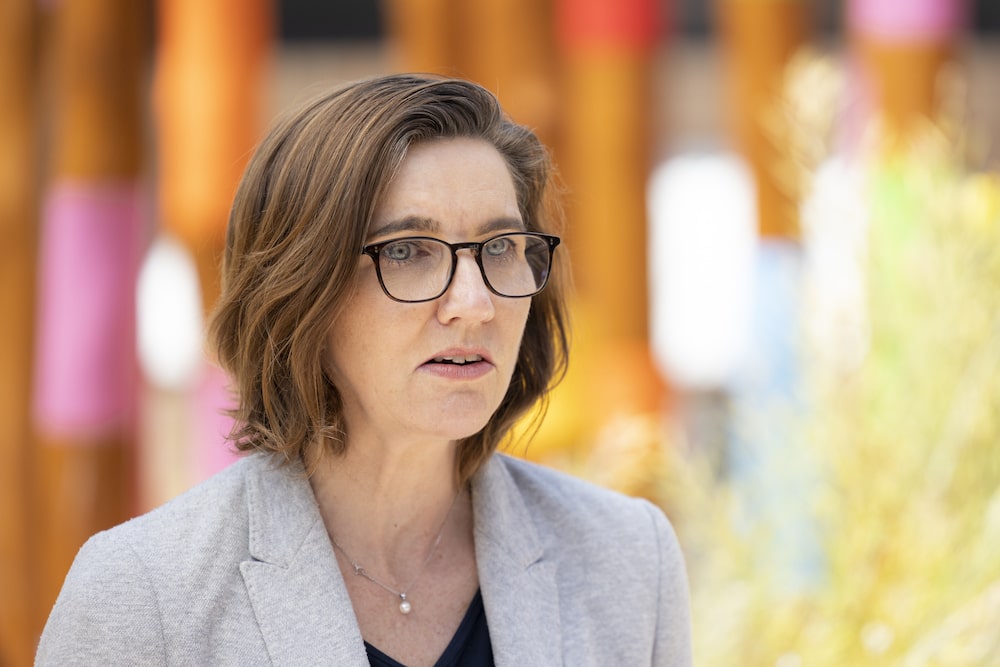The BA.2 omicron subvariant is likely to be the dominant strain of COVID circulating in the ACT, NSW, and nationally very soon, the ACT Acting Chief Health Officer, Dr Vanessa Johnston, said this morning.
“It is more transmissible than BA.1 [the previously dominant strain],” Dr Johnston said. “But there’s no indication that it’s any more severe, at this stage, and the vaccine is as effective against BA.2.”
The BA.2 subvariant is believed to be more than 40 per cent more transmissible than BA.1, the ABC reported; some medical experts predict 20,000 to 30,000 infections a day in NSW.
Already, Dr Johnston said, an “increasing proportion” of test samples in the ACT were omicron BA.2.
But although it is more virulent, more hospitalisations or deaths are unlikely, as surges in case numbers in Europe have shown, the ABC continued. Antibodies from omicron protect the public.
“If you contract Omicron BA.1, you’re far less likely to get BA.2, because you’ll have some cross-immunity,” Dr Johnston said. “It’s not to say you can’t, but you’re far less likely.”
However, winter’s predicted surge in BA.2 will come in at the same time as the first major influenza season in two years.
“We may see another rise in cases,” Dr Johnston said. “So we’ve got a lot of preparation and planning underway around how we respond to this.”
The community should get vaccinated against ’flu when vaccines become available, and stay up to date with their COVID-19 vaccinations, she advised.
The COVID-19 vaccine is effective and protects against both symptomatic infection and severe disease for the delta and omicron variants, as well as the older beta variant. However, some of that protection wears off after three or four months, because of the virus’s immune escape properties, Dr Johnston explained.
“Omicron and delta are a little bit more evasive of the body’s natural immunity defences if someone’s infected.”
Getting a booster dose three months after the second vaccine restores that protection, up to 90 per cent against hospitalization and 70 per cent against infection – “A really good outcome,” Dr Johnston said.
“That is why, particularly leading into winter, we really encourage everyone to get that booster dose as soon as you click over from three months from your primary course.”
ATAGI (the Australian Technical Group on Immunization Advice) is considering a fourth dose or a second booster dose for high-risk groups, such as immunocompromised and elderly people, as Germany and Israel have done. Dr Johnston does not expect the whole population would need such a dose.
Five- to 11-year-old children became eligible for their second doses last month. “COVID is much more likely to be a mild or even asymptomatic illness in kids, but kids also can get sick,” Dr Johnston warned. A few Canberra children have been admitted to hospital with fevers or difficulties eating and drinking; in rare cases, children can also die, or get widespread internal organ inflammation, leading to organ failure.
“I’m pointing to a few, very rare outcomes that are worth taking into consideration when we consider how safe and effective this vaccine is,” Dr Johnston said.
Millions of children worldwide have been vaccinated, while Australia monitors the vaccine rollout for “any kind of signal of a significant adverse event in kids”.
Vaccinated children are less likely to get infected, bring the virus home, and pass it onto relatives at more risk of disease.
“It keeps our families and our community safe,” Dr Johnston said.
Dr Johnston also encouraged the public to practice COVID-safe behaviours, such as hand hygiene and wearing masks.
“There has been a significant reduction in indoor mask-wearing since the mandate was lifted; I would like to see that change already,” she admonished the public.
“When you’re indoors and cannot socially distance … I would like for people to consider using your mask, even though it’s not required by the business or by ACT Government. It is our advice, and that responsibility now falls to the community.”
The public should also stay away from their workplaces or schools if they are sick.
Canberra Health Services will be guided by the pressure on the healthcare system, the rate at which cases rise (which gives a good indication about the subsequent impacts on the health care system), and any other emerging evidence about BA.2, Dr Johnston said.
Changes to quarantine
Currently, household contacts must, and high-risk close contacts are recommended to, quarantine for seven days.
Last week, Prime Minister Scott Morrison asked the Australian Health Protection Principal Committee (AHPPC) to scrap isolation rules for close contacts. At this stage, Dr Johnston said, no changes have been made, but the AHPPC will meet to discuss the issue soon.
From yesterday, childcare staff and children will not need to quarantine if exposed to a COVID case, Dr Johnston announced, but they must get a negative COVID-19 test – either RAT or PCR – in the 48 hours before they return.
This aligns the early childhood sector with schools, Dr Johnston said. From the beginning of the year, the government’s approach to exposures in childcare settings was “more conservative” because children under five could not be vaccinated, but had close and prolonged one-on-one contact with their carers.
“[This] will be very welcome news for staff, parents, and families who have been impacted by those settings,” Dr Johnston said.



